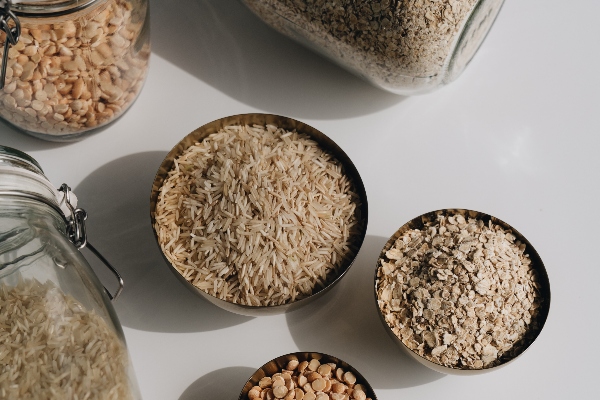What to check when shopping for whole grains
By Sonia M. Quirino
Do you know what to look for when shopping for whole-grain foods?
Identifying products that have a significant amount of whole grain can be confusing, even for dietitians.
A good place to start would be to see if the product carries the American Heart Association’s distinctive red and white heart-check mark. This simple logo means the food has at least 51 percent whole grains by weight, meets minimum daily dietary fiber content criteria and is low in saturated fat and dietary cholesterol.
The American Heart Association has added the new whole grain category to its existing Food Certification Program to help consumers quickly select foods rich in whole grains, which are an important part of a healthy dietary pattern that should also emphasize fruits, vegetables, low-fat dairy products, lean meat, poultry and fish twice a week.
Whole-grain foods are made from the entire seed (kernel) of a plant. Common whole grains include whole wheat, whole oats/oatmeal, brown rice, whole grain barley, wild rice, popcorn and others. According to the American Heart Association, its heart-check mark is the only third-party symbol that identifies products that meet the FDA’s criteria for whole-grain and dietary fiber content.
Whole-grain foods are an important part of a healthy diet because they are a rich source of both insoluble and soluble dietary fiber. Soluble fiber has been shown to help lower LDL cholesterol levels (the bad cholesterol), and therefore reduces the risk of coronary heart disease. Insoluble fiber also has been associated with decreased cardiovascular disease risk. In many scientific studies, diets rich in whole grain foods also have been associated with a decreased risk of cardiovascular disease.
On your next visit to the grocery store, remember to look for the heart-check mark along with the statement, “Meets American Heart Association food criteria for saturated fat, cholesterol and whole grains for healthy people over age two.” You’ll be confident you’re buying a whole-grain product that delivers optimal health benefits. Diets rich in whole grain foods and other plant foods, and low in total fat, saturated and trans fats and cholesterol, may help reduce the risk of heart disease. For information on the criteria products must meet for the whole-grain certification and a list of certified products, visit www.heartcheckmark.org.
Sonia M. Quirino writes for the American Heart Association, which, since 1924, has helped protect people of all ages and ethnicities from the ravages of heart disease and stroke. These diseases, our nation’s number one and number three killers, claim more than 910,000 American lives a year. The association invested nearly $474 million in fiscal year 2004-05 for research, professional and public education, advocacy and community service programs so that people across America can live healthier, longer lives. To learn more, call 1(800)AHA-USA1 or visit www.americanheart.org.






